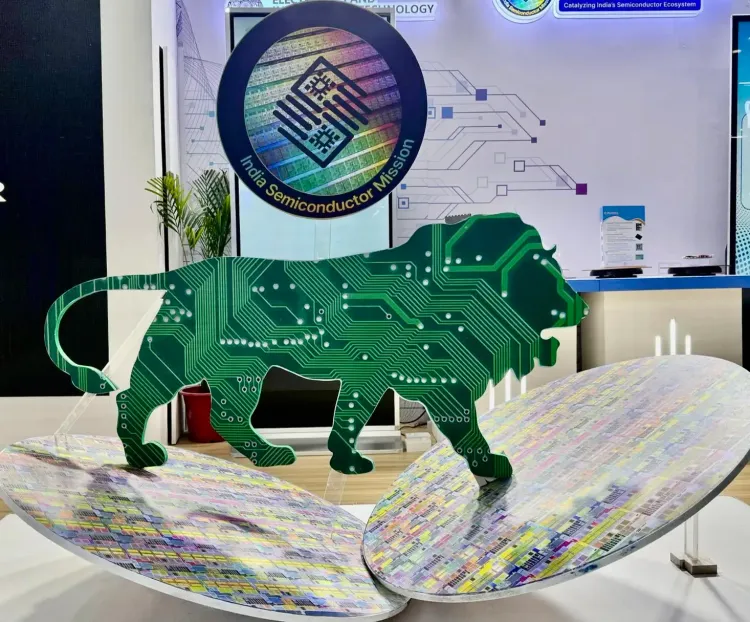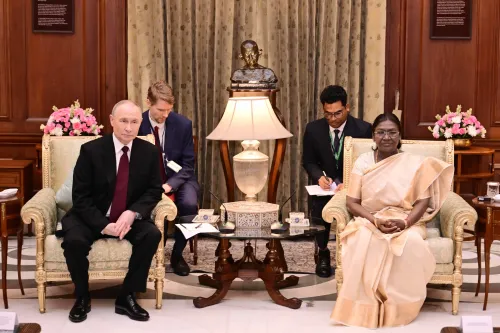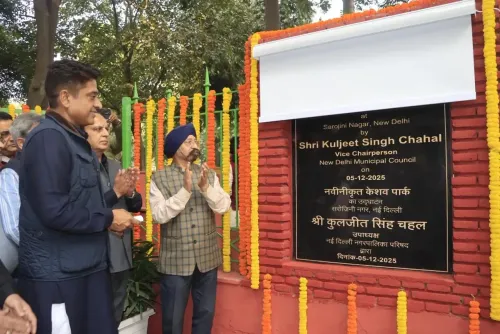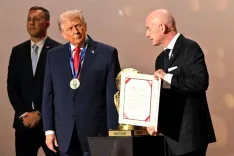Has the Govt Extended the PLI Scheme Application Window for White Goods?

Synopsis
Key Takeaways
- Application window extended for PLI scheme until November 10, 2025.
- Rs 6,238 crore allocated for boosting white goods manufacturing.
- Over 12 lakh jobs created since the scheme's inception.
- PLI scheme has attracted Rs 1.76 lakh crore in investments.
- Focus on enhancing India's global competitiveness in manufacturing.
New Delhi, Oct 17 (NationPress) The Department for Promotion of Industry and Internal Trade (DPIIT) has announced an extension for the application window for Round 4 of the Production-Linked Incentive (PLI) scheme, specifically for white goods such as air conditioners and LED lights, now set to close on November 10, 2025.
Originally, the window was open from September 15 to October 14, but this extension comes in response to the robust industry interest and the rising investment enthusiasm linked to the scheme.
According to the Commerce Ministry, “This demonstrates the increasing confidence and momentum generated by domestic manufacturing of critical components for ACs and LED Lights in India under the PLI-WG Scheme.”
The PLI Scheme for White Goods, which was initiated in April 2021 with a financial outlay of Rs 6,238 crore, aims to enhance domestic manufacturing, promote localization of components, and fortify India’s competitiveness globally in the air conditioning and LED lighting sectors.
Previous rounds of the scheme have already garnered significant investment pledges, leading to improved manufacturing capabilities and job creation throughout the value chain.
These investments are expected to facilitate the production of components for ACs and LED Lights across the entire value chain, including those components that are currently not manufactured in India in sufficient quantities.
Since its inception in 2020, the PLI scheme has attracted a staggering Rs 1.76 lakh crore in committed investments and has resulted in the creation of over 12 lakh jobs. The scheme has also approved 806 applications across 14 strategic sectors, primarily aiming to enhance manufacturing in alignment with the Atmanirbhar Bharat initiative.
Under this scheme, companies are rewarded for sales that surpass a predetermined baseline. Initially, sectors like mobile electronics, active pharmaceutical ingredients, and medical devices were included, with automobiles, textiles, food processing, solar modules, and semiconductors added later.
Remarkably, electronics and mobile manufacturing saw a rise of 146 percent from Rs 2.13 lakh crore in FY 2020-21 to Rs 5.25 lakh crore in FY 2024-25. The auto and auto-component sectors have attracted over Rs 67,000 crore in investments.
By March 2025, PLI participants across all sectors are projected to report combined sales exceeding Rs 16.5 lakh crore, as per the report.
While MSMEs benefit indirectly, their direct participation in PLI schemes remains limited, highlighting that addressing this shortcoming is crucial for the scheme to realize its full transformative potential.
Execution of several projects has been sluggish, especially against the backdrop of competition from countries like Vietnam and China, necessitating ongoing innovation in policy design and logistics infrastructure.
While sectors like electronics and pharmaceuticals thrive due to the PLI scheme, others, including textiles and white goods, require additional time to scale effectively.
The report emphasizes that improved monitoring, complementary reforms in logistics and infrastructure, and increased budget allocations for FY 2025-26 will bolster the PLI's effectiveness and elevate manufacturing's share of GDP to 25 percent.
Moreover, the scheme is anticipated to position India firmly within global supply chains for electronics, EVs, and pharmaceuticals.










